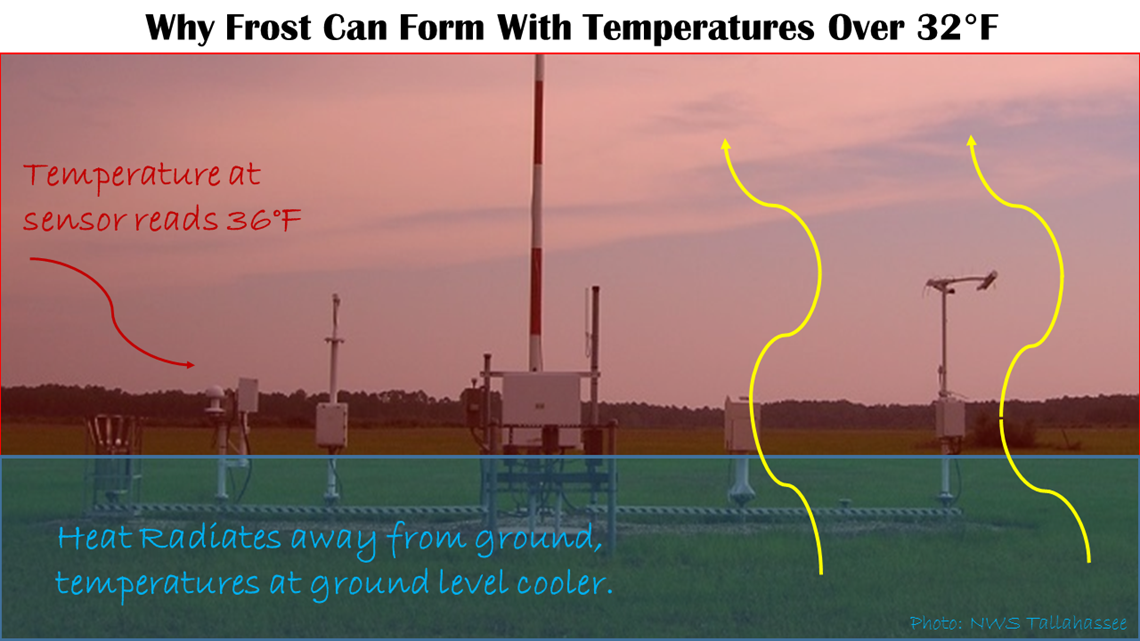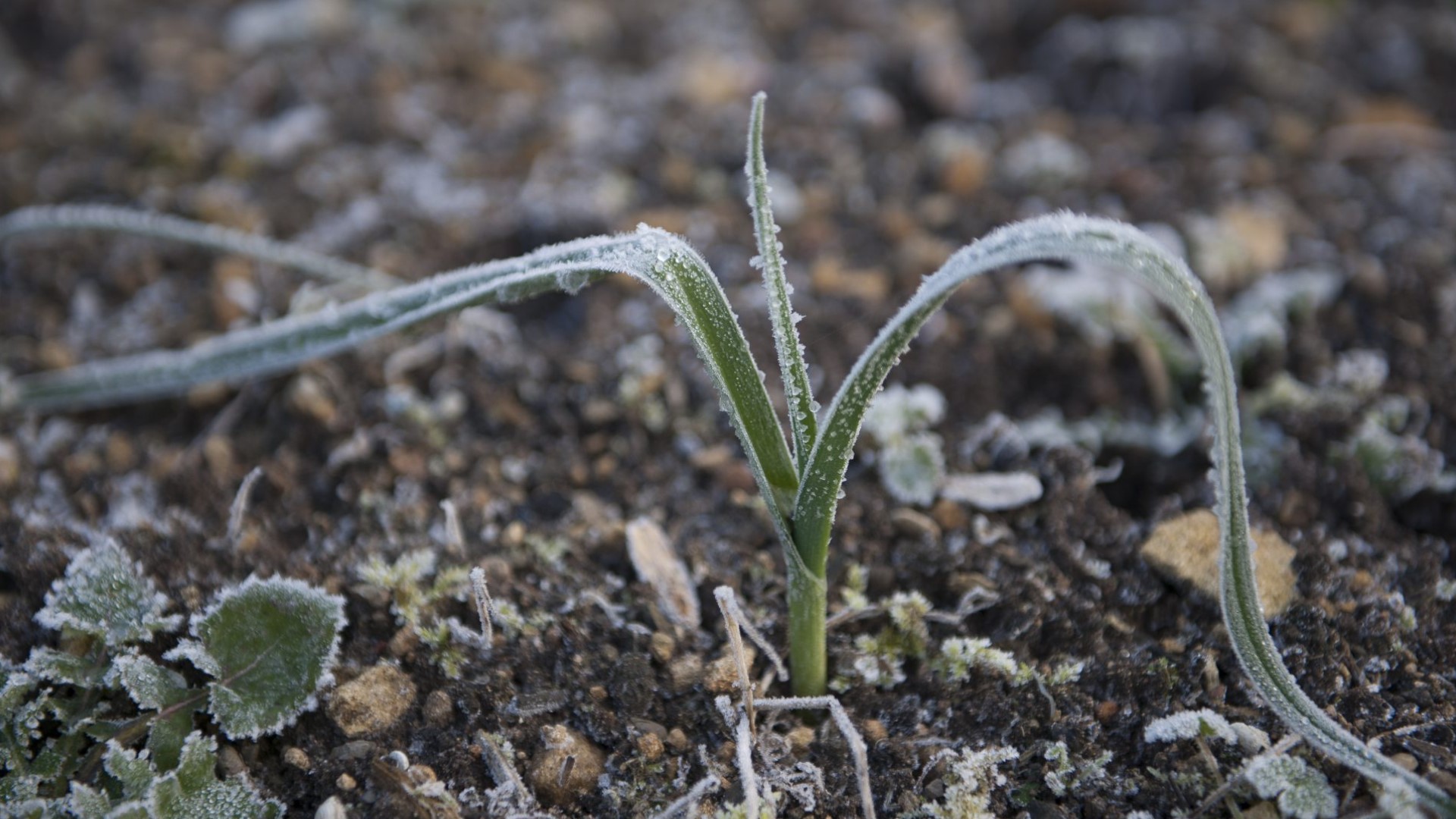According to the NWS, a temperature of 32 degrees Fahrenheit has officially been recorded as early as Sept. 21 in Columbus and as late as Nov. 27.
Our "normal" first freeze occurs on Oct. 27 and it looks like some of us may get close to that this upcoming weekend.
While most of us won't get to the freezing mark, frost can still form at the surface.
What is frost?
Frost is frozen dew, the formation of ice crystals when the temps are near freezing, and what hurts the plants is the water that is within the plant cells freeze and the cells burst, this causes the plants to look water-soaked and it can kill them.


Official NWS temperature sensors read 5 feet above surface and that's important to know because as heat radiates away from the ground, it can be closer to freezing and cause frost to form at ground level.
So the next time you look at your weather app and see an overnight low of 35 degrees is expected, just know that you could be waking up to frost in your backyard.
Now for those of you that have outdoor plants that you can't bring inside, you'll need to know how to protect your plants against frost.
Colette Gabriel, Plant Health Division, Ohio Department of Agriculture(ODA) said that it's important to be proactive the day before an expected frost.
Specifically, covering up your outdoor plants hours before sunset with a breathable material such as a cloth or burlap sack.
"That allows some heat to be retained because if you put it on at nighttime it’s already lost a considerable amount of heat," said Gabriel.
When covering your plants, avoid using any plastic materials.
"Condensation starts building up and so that plastic keeps it all contained and so once it gets cold that all freezes. That doesn’t help the plant it makes things worse."
Also, Gabriel recommends picking as many fruits and vegetables as you can the night before a frost.
"The fruit tends to be a lot more touchy and if it gets too cold, it just becomes mush in the morning."
Gabriel has a checklist for prepping plants for a frost:
1-3 weeks prior:
- Save grass clippings
- Trim plants and clean up dead plant debris
- Make sure you have enough frost fabrics: burlap, bedsheets, towels, blankets, paper bags, paper boxes etc.
Evening before:
- Harvest fruits and veggies that will be ruined by the frost, tomatoes, peppers etc. as the frost will ruin the produce and make them mushy
- Use grass clippings or fallen leaves to completely cover smaller plants
- Use burlap or sheets to cover other plants, make sure the frost fabrics are tucked in or held down, so they do not blow off the plants, and make sure to cover the plants entirely
The next morning:
- Remove the coverings/ frost fabrics, leaving them on could
- Any plants that may have been hit and were not covered or if the temps were below 30 degrees, drench with water before the sun reaches the plants, this will help wash the frost off and help the plants recover from the cold temps and prevent the cells from bursting.
If frost/temps go below 30 degrees even with coverings the plants my be damaged or killed by a frost.
As of 4:00 p.m. Wednesday, the forecast for low for Saturday morning is currently 34 degrees.

